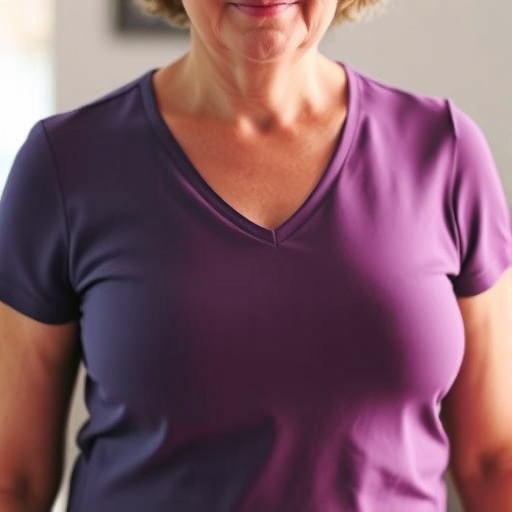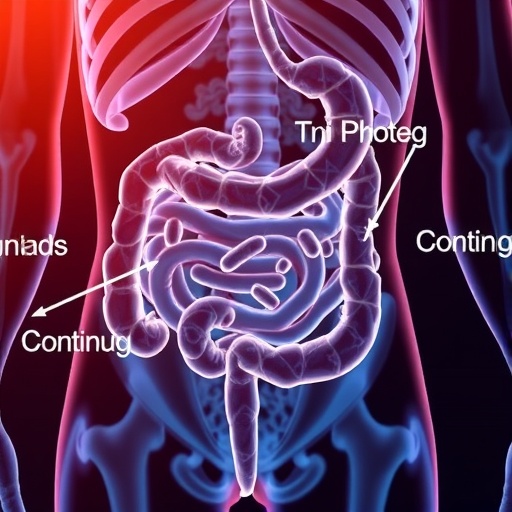Title: Changes in Use, Cost, and Value of Breast Cancer Screening Among Older Women in the US
As the aging population in the United States continues to expand, the need for effective health screenings has become increasingly critical, particularly in the realm of breast cancer detection. A recent study published in the Journal of General Internal Medicine sheds light on the shifting landscape of breast cancer screening among older women, revealing significant trends in usage, associated costs, and the perceived value of these vital healthcare services. This comprehensive examination not only highlights the evolution of screening practices but also offers insights into the implications for future healthcare policies.
The research meticulously examines how various factors influence the utilization of breast cancer screening among older women. It draws on a substantial body of data, demonstrating that despite advancements in technology and a heightened awareness of preventive care, the participation rates in screening programs have shown a complex trajectory. This disparity is particularly pronounced among women of different socioeconomic backgrounds who may experience varying levels of access to healthcare resources. Understanding these dynamics is essential for developing targeted interventions that promote equitable access to life-saving screenings.
The study outlines several critical factors influencing screening practices, including demographics, insurance coverage, and geographical location. It underscores the role of health insurance in facilitating or hindering access to screening services. The implications of insurance coverage are far-reaching; they can dictate whether older women seek regular screenings based on personal financial assessments. This implies that as socio-economic factors fluctuate, corresponding changes in screening habits are equally likely to occur, highlighting a vulnerable population that may be left behind in the pursuit of preventive care.
Costs associated with breast cancer screenings have also been a central focus in the research. The study presents an alarming trend: as the financial burden of healthcare increases, many older women are confronted with difficult choices regarding their preventive health services. The financial implications of screening can lead to fear and reluctance to pursue necessary tests, which ultimately increases the risk of a later-stage diagnosis when treatment may be more complex and costly. This stress and apprehension have a profound impact, not only on individuals and their families but also on the broader healthcare system as resources are allocated towards treating advanced cancer cases rather than preventing them.
Additionally, the study emphasizes the value that older women ascribe to breast cancer screenings. While the medical community often underscores the importance of regular screenings, the perception of value is multi-faceted. For many women, the psychological aspect of screening—ranging from the fear of diagnosis to the empowerment derived from early detection—plays a significant role in their health decisions. The authors argue that understanding how older women evaluate the benefits and drawbacks of screening is vital for fostering an environment where preventive measures are prioritized.
Equally important to highlight is the role of public health campaigns in educating older women about the importance of breast cancer screening. The research displays a correlation between awareness initiatives and increased screening rates. Educational efforts that demystify the process and emphasize the significance of early detection can enhance participation and, consequently, save lives. The research suggests that expanding these campaigns, especially in underserved communities, could address the disparities identified in the data.
The transition towards value-based healthcare is also discussed in the study. In an era where health outcomes are prioritized over procedural volume, it’s essential to evaluate how breast cancer screening fits into the broader framework of patient care. The authors advocate for a more comprehensive assessment of screening programs, emphasizing the need to consider not only immediate clinical outcomes but also long-term quality of life metrics for older women. This paradigm shift is crucial for driving the evolution of breast cancer screening practices, ensuring that they are not only prevalent but also effective in improving patient outcomes.
In examining the cost-effectiveness of breast cancer screenings, the study draws attention to the varying methodologies employed in assessing screening value. The authors propose that future studies should adopt a more unified approach, incorporating diverse economic factors and patient perspectives. By standardizing metrics of success, policymakers can make informed decisions that will optimize the allocation of resources towards screening programs that yield the most benefit.
The implications of these findings extend beyond clinical settings, beckoning policymakers to consider re-evaluating health insurance structures to better accommodate older women’s needs. Structural barriers within the healthcare system can deter many from seeking necessary screenings; therefore, a strategic overhaul could pave the way for enhanced accessibility. Adjustments such as expanded coverage for preventive services or targeted subsidies could alleviate financial burdens, ultimately leading to higher screening rates among older women.
The authors stress the importance of collaboration among stakeholders, including healthcare providers, policymakers, and community organizations. By working together, these groups can create a formidable network aimed at improving breast cancer screening rates, ensuring that older women receive the care they deserve. Such partnerships can also foster innovation in outreach strategies that resonate with different demographics, addressing diverse cultural and socio-economic nuances.
Ultimately, the research encapsulates a critical moment in healthcare, one that necessitates introspection and action. The changes in use, cost, and perceived value of breast cancer screening among older women are not merely statistics; they represent the realities faced by countless individuals navigating the complexities of the healthcare system. As this population continues to grow, it is paramount to remain vigilant and proactive in ensuring that these women have access to effective and affordable preventive services.
In conclusion, the study by Richman et al. serves as a clarion call for greater awareness and action surrounding breast cancer screening among older women in the U.S. It invites healthcare stakeholders and policymakers alike to reevaluate existing frameworks and develop concerted efforts to improve access, reduce costs, and increase the overall value of screening programs. As the journey towards optimal healthcare for older women progresses, it is essential to place their needs at the forefront—empowering them with the information and resources necessary to make informed health decisions that could ultimately save lives.
Subject of Research: Changes in Use, Cost, and Value of Breast Cancer Screening Among Older Women in the US
Article Title: Changes in Use, Cost, and Value of Breast Cancer Screening Among Older Women in the US
Article References: Richman, I., Long, J.B., Lindsay, M.E. et al. Changes in Use, Cost, and Value of Breast Cancer Screening Among Older Women in the US. J GEN INTERN MED (2025). https://doi.org/10.1007/s11606-025-09778-y
Image Credits: AI Generated
DOI: 10.1007/s11606-025-09778-y
Keywords: Breast cancer screening, older women, healthcare access, cost-effectiveness, public health, value-based care
Tags: awareness of breast cancer preventionbreast cancer screening trends for older womenchanges in healthcare practices for elderly womendisparities in cancer screening by socioeconomic statuseconomic impact of breast cancer screeninghealthcare access for aging populationsimplications for healthcare policy on cancer screeningJournal of General Internal Medicine studiesrecent advancements in breast cancer detectiontargeted interventions for equitable healthcareutilization rates of mammography among older womenvalue of preventive healthcare for seniors





